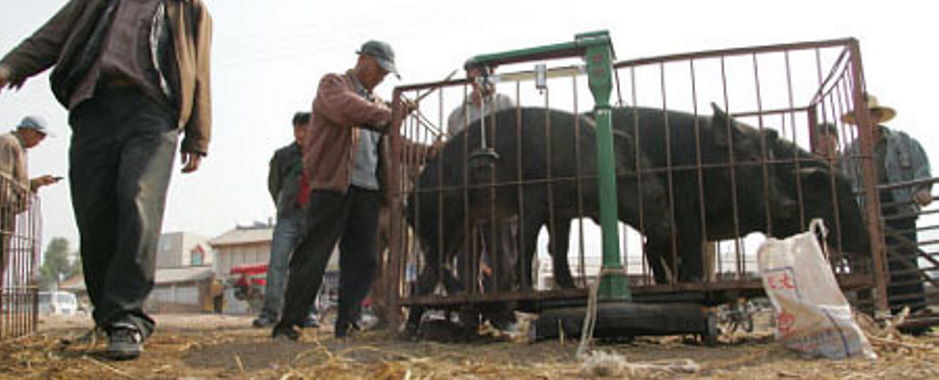Background
This is a method used within the STEPS Centre’s Responding to zoonotic and related diseases in intensifying livestock systems: diverse framings and pathways project. A system history is the manager’s account of the choices they have made over time in what they do in their enterprise, how they do it, the influences they respond to and the objectives they pursue. That enterprise, with its flows inwards and outwards of information, material and energy, controlled to some extent by the manager’s decisions, can be considered a system. The method has been developed in the Intensifications project in Yunnan China with livestock producers. The context is one of accelerating demand from urban consumers particularly for pig, which is being met by increases in the size of production units and greater reliance on new breeds, purchased feed and drugs. At the same time, there is growing concern, within China and internationally, regarding the health risks that may be associated with these changes, particularly zoonotic diseases that can pass between livestock and humans.
The system history seeks to evidence the individual agency that is obscured by these larger narratives: it assumes that there is more than one history. It pays attention to the knowledge and experience of producers who are navigating rapidly changing social, economic and biotic landscapes, knowledge and experiences that are often ignored or denigrated.
What’s involved?
System histories being time-consuming, a key decision is: whose histories to collect. We aimed to characterize and highlight the range of producers’ experiences, including often marginalized perspectives, rather than to define some notional mean. Producers were selected across two dimensions that we hypothesized are important influences on management decisions: accessibility to a city, a focus of demand; and scale of production. Ethnic minorities also predominated in the less accessible areas.
We began with a focus group discussion in each village to better understand the major directions of change locally and to identify “time-marks” – public events over the past several decades which producers recounting their system histories could use to situate the changes they had made.
If the producer didn’t mention it, we asked, trying not to break the flow, about changes over the past 15 or so years in their use of inputs, in the outputs sold or consumed, in how they dispose of waste and dead animals, in how they integrate pig production with other aspects of livelihood, in the disease and other risks they recognize and how these influence their decisions. Finally, where do they hope to be 5 years from now with their pig enterprise? Where do they expect to be? What is constraining or enabling them to reach what they envision?
Broadening Out and Opening Up
System histories can illuminate the diversity of interests and objectives that managers pursue, which typically find little place in the productivist framings of agricultural development and development more broadly. They can also bring out the possibly unrecognized constraints to and consequences of the change envisaged in dominant pathways. In Yunnan, the histories show that people are making use of the elements of intensification but in varied combinations. Risks of different kinds, beyond disease, shape their management decisions: volatility in output prices, increasing input costs, the threat of culling and failing to find affordable credit.
System histories might be brought into policy spaces where the issues are being debated. We are trying to open up that debate: feeding back what we have learned from the system histories in village meetings with producers, consumers, butchers, vets and other groups; bringing the gist of those meetings’ discussions to meetings with concerned ministries, and convening multi-stakeholder meetings with all these groups at county and provincial levels.
The system history draws on two quite different methodological streams. One is oral history, which has often served to highlight the “view from below” of major events. To our knowledge, it has not previously been used to shed light on experiences of large technological change. The other stream involves the “farm system” which has been the object of much modelling in agricultural economics. Our use of “system” differs in recognizing the diverse objectives that farmers may pursue and the social, economic and political constraints to their innovation.
Fit and Limits
The system history can be very useful in engaging actors, including the most marginalized. In highlighting their stories and enabling comparison with others’, the operation of power is brought out. Comparison across histories can also suggest where people’s framings of ‘system’ and the interests they pursue are similar or diverge. A particular strength is in highlighting key decision points and how they relate to shocks, individually or collectively experienced.
The system history is more a method for scoping out perspectives and experiences than for focusing attention on alternatives. The trajectories that the histories lay out, with their near-future “tails”, do not themselves describe pathways (“self-reinforcing narratives of change”): often what producers envisioned, or what they told us, was: the same but bigger if I can get a grant; stagnation if not. For many system managers in many contexts, imagining something qualitatively different is a waste of time and sometimes dangerous. Creating a space where such futures can be safely explored and debated is more than just a research method.
Skill is essential in handling the system history. Particularly sensitive aspects may not emerge if the person does not feel assured of confidentiality. In Yunnan, we found that such issues were more likely to come up in the focus groups where participants could refer to what others do.
Key references and links
-
A recent STEPS blog by Jim Sumberg and colleagues describes some of the intellectual pedigree of the farm system and related concepts. Tiffen et al (1994) used oral histories, with other methods, to understand the impact of demographic and technological changes in a heavily eroded area of Kenya.
-
Tiffen M, Mortimore M, Gichuki F. 1984. More people, less erosion: environmental recovery in Kenya. New York: John Wiley and Sons. http://www.popline.org/node/303096#sthash.3qm95NJh.dpuf
